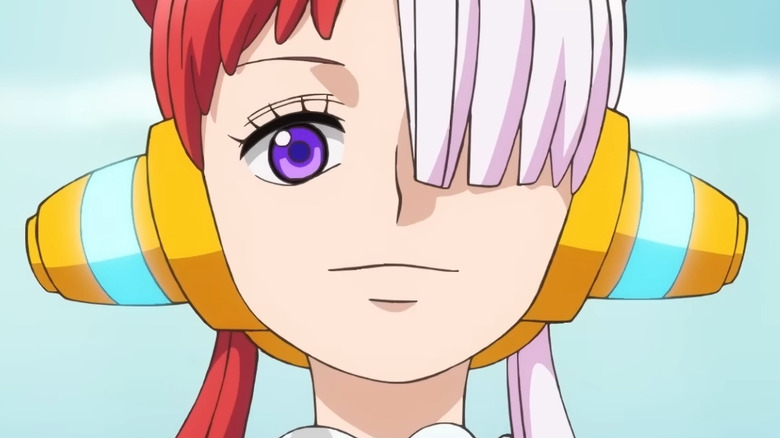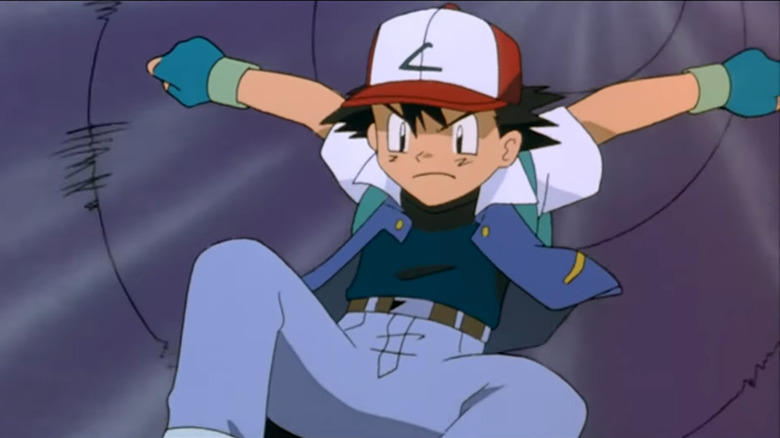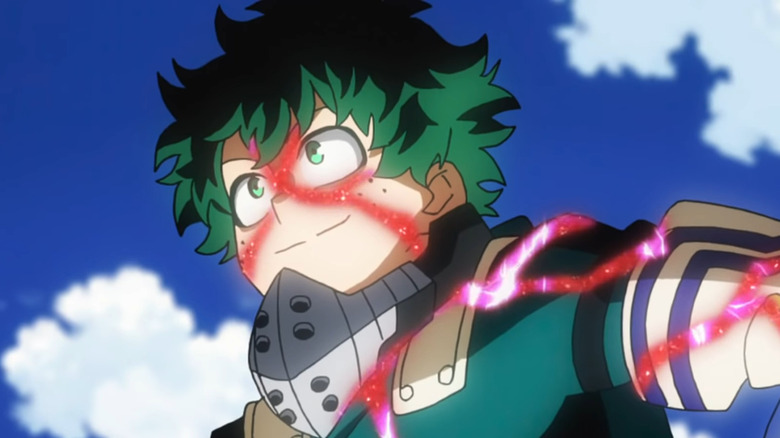One Piece Film: Red Continues The Tradition Of Setting An Anime Movie On An Isolated Island
"One Piece Film: Red" is the latest cinematic entry into the ongoing "One Piece" franchise — an anime that follows Monkey D. Luffy (Colleen Clinkenbeard), a super-powered pirate on a quest to become the King of the Pirates. There's A LOT more to it than that, but with over two decades of manga and anime to draw from, it would be almost more concerning if a single sentence could cover the whole story. In the case of "One Piece Film: Red," Luffy and his crew (the Straw Hat Pirates) journey to Elegia, the Island of Music, for a concert put on by Uta (AmaLee).
The film features tons of awesome music and even more piratical characters (don't worry, no spoilers here), but the aspect we're going to focus on for now is how "One Piece Film: Red" builds on a fairly common practice in anime by sealing the entire movie away on an isolated island. Did something immediately come to mind? Of course, it did. Here are some of our most notable examples.
Pokémon love ominous islands
In 1998, Warner Brothers Pictures released "Pokémon: The First Movie," also known as "Mewtwo Strikes Back." Technically, that secondary title is only for the primary chunk of the film, as the first handful of minutes is dedicated to a cute animated short, but who's being technical about it? At any rate, the movie tells the story of Ash Ketchum (FROM PALLET TOWN!) traveling to an isolated island to challenge a mysterious Pokémon master, who turns out to be Mewtwo, the legendary philosophy-type Pokémon with an understandably bruised ego. The island is very much a trap to punish humanity and any Pokémon willing to be subservient human masters. This, however, was not the last time that Pokémon featured an isolated island locale, even if it was the most profitable.
In 2000, Warner Brothers Pictures released "Pokémon: The Movie 2000" (to be fair, Pokémon got better with naming conventions a little later on down the chronology), a movie that follows Ash as he travels through the Orange Islands. On this leg of his decades-long journey, he stumbles across an evil Pokémon collector who's hellbent on ensnaring Articuno, Zapdos, and Motlres (the three legendary bird Pokémon). He looks to forcefully awaken — and subsequently capture — Lugia, a fourth and equally legendary bird Pokémon. Unlike "Pokémon: The First Movie," the second film takes place on multiple islands, but the whole structure is still framed around these spits of land being isolated from the broad population.
My Hero Academia loves a good remote island, too
In 2018, Toho released "My Hero Academia: Two Heroes," a wholly original narrative addition to the "My Hero Academia" franchise, an anime that broadly follows Izuku Midoriya, aka Deku, a young student in a specialty school for super-powered people set on becoming heroes. Little Deku's attendance is assured when he's gifted the abilities of the world's greatest hero, All-Might. In "My Hero Academia: Two Heroes," Deku travels to I-Island, an artificial and mobile landmass, with All-Might to visit one of the legendary hero's old friends. During their visit, I-Island is attacked by villains, and the two heroes must defend the citizens from harm. Unsurprisingly, it wouldn't even be a year before this basic framework was reused.
In 2019, Toho released "My Hero Academia: Heroes Rising," another original narrative addition to the franchise that sticks to the tried and true formula of overusing the term "heroes" for some weird reason. That could have been the onus for this article: why do anime titles feature so much redundancy? Anyway, "My Hero Academia: Heroes Rising" sees Deku and his classmates traveling to Nabu Island to save its inhabitants from a mutated villain who's collecting Quirks (the canon term for superpowers). Nabu Island is specifically mentioned as being a remote location, far from society, so its population is easy prey for dangerous persons.
Look, we get it. Inventing remote locations is a speedy and easy way to insert fun new visuals and characters temporarily, so it's an understandable trope but, eventually, these anime's world maps will be drowning in so many remote islands that the term will lose all meaning.


